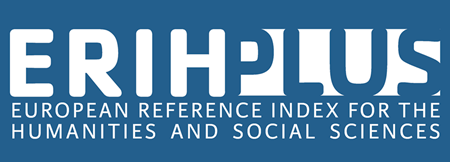THE PROBLEM OF IDENTIFYING A PROPAGANDA NARRATIVE IN THE MODERN GERMAN PRINTED PRESS
DOI:
https://doi.org/10.32782/folium/2025.7.25Keywords:
narrative, propaganda, ideology, manipulative technology, hybrid information warfare, precedent text allusion, media stereotype.Abstract
The article presents an attempt at a new interpretation of the basic concepts of narrative, propaganda, ideology, manipulative technologies and hybrid information warfare, in the context of their changes over the past 3 years, from the point of view of linguistics and media science in general. The subject of consideration was the contextual and idiomatic verbalization of the media image of Ukraine and the Russian-Ukrainian war, starting from 2014, in the German periodicals “Die Frankfurter Allgemeine Zeitung”, “Die Tageszeitung” and “Der Spiegel”. Particular attention was paid to the potential possibilities and actual verbal means of manipulating the readership to create a distorted image of reality. Based on the material of German press sources from 2014–2022, the evolution of the aggressor’s propaganda narratives is analyzed, in the time period from the beginning of the Russian invasion in 2014 to the beginning of a full-scale war of aggression in 2022. To this purpose, frequently used motives, images, clichés, precedent text allusion and media stereotypes of Ukraine, which are presented in the analyzed press sources, are identified. Their classification into explicit and implicit is proposed, with the help of quantitative and content analysis the marginalization of the former and qualitative changes in the latter are illustrated. Particularly stable and consensual implicit propaganda narratives are identified, which retain a high degree of use in the German media, despite facts and historical events, due to the inertia of use, selfcensorship and tabooing of word usage. Typical difficulties in identifying a manipulative propaganda narrative, especially an implicit one, with blind use and imitation of adherence to the standards of freedom of speech and journalistic impartiality, have been identified. The main factor in the stability of a propaganda narrative is the ability to euphemize, indirect nomination, and inflationary frequency of use. The emergence of new, more sophisticated narratives of indirect action is predicted and the need for their further study is substantiated.
References
Васильєва, Н.В. (2022). Пропаганда як складова інформаційно-комунікативної політики і загроза національній безпеці. Таврійський науковий вісник. Серія Публічне управління та адміністрування, 2, 34–41.
Вітушко, Н. (2014). Перевірка інформації на достовірність у процесі підготовки джерельної бази бібліотечного аналітичного продукту в умовах інформаційного протистояння. Київ. Вип. 39, С. 328–339.
Експерти підрахували кількість фейкових новин на сайтах ОРДЛО (2024). URL: https://tsn.ua/ato/v-instituti-masovoyiinformaciyi-
doslidili-skilki-feykovih-novinna-saytah-ordlo-886438.html (дата звернення: 06.04.2025).
Енциклопедія сучасної України (2024). URL: https://esu.com.ua/article-64263
Житарюк, М. (2018). «Історична тяглість» щодо України (від Й. Сталіна до В. Путіна) у сценаріях реанімування Російської імперії.
Вісник Львівського університету. Серія журналістики, 44, 101–111.
Завадський, І.І. (1996). Інформаційна війна – що це таке? Захист інформації. Конфідент, № 4.
Карлова, В.В. (2024). Вплив засобів масової інформації на формування української національної свідомості. URL:
http://academy.gov.ua/ej/ej6/txts/07kvvunc.htm (дата звернення: 28.05.2024).
Контргра. Як зупинити російські фейки (2024). URL: http://tyzhden.ua/Society/184903 (дата звернення: 06.04.2025).
Amelina, V., & Petrov, N. (2014). Legitimität, Repression, Kollaps. Die Entwicklungsstadien des Putin-Regimes. Osteuropa. 8, 85–98.
Blumer, H. (1939). Collective Behavior. Robert E. Park, Ed. An Outline of the Principles of Sociology. New York: Barnes and Noble, pp. 219–280.
Die Ukraine und ihre vertrackte Identität. Arbeit an den Stereotypen. URL: http://www.nzz.ch/feuilleton/arbeit-anden-stereotypen-1.18657794.
Drescher, J. (2022). Übersicht der deutschsprachigen Medien zur Lage in der Ukraine (30. November – 6. Dezember). Ukraine Crisis Media Centre: URL: http://uacrisis.org/ua/38336-deutsch-30-november-bis-6-
Hallin, D.C., & Mancini, P. (2004). Comparing Media Systems: Three Models of Media and Politics (Communication, Society and Politics).
Cambridge University Press. 320 p.
Jilge, W. (2014). Was treibt Russland? Zum Hintergrund der Ukraine-Krise. Euromaidan. Was in der Ukraine auf dem Spiel steht. Berlin, S.
–194.
Niggemeier, S. (2014). Die Wahrheit über die Lügen der Journalisten. Krautreporter, 24.10.2014. URL: http://krautreporter.de/46--die wahrheit-uber-die-lugender-journalisten
Pomerantsev, P., & Weiss, M. (2014). The Menace of Unreality: How the Kremlin Weaponizes Information, Culture and Money. New York. URL: http://www.interpretermag.com/the-menace-of-unreality-how-the-kremlinweaponizes-information-culture-and-money/
Spahn, S. (2016). Das Ukraine-Bild in Deutschland: Die Rolle der russischen Medien. Hamburg: Verlag Dr. Kovač. 186 S.
Szafranski, R. (2019). Theory of Information Warfare: Preparing For 2020. Official Site of «Airpower Journal». URL: http://www.airpower.
au.af.mil/airchronicles/apj/apj95/spr95_files/szfran.htm
Thiele, M. (2015). Medien und Stereotype Konturen eines Forschungsfeldes. Transcript Verlag.
Ukraine-Konflikt, Berlins Antwort auf Putins Mythen, Der Spiegel online, 19.02.2015. URL: http://www.spiegel.de/politik/ausland/
ukraine-konfliktberlins-antwort-auf-putinsmythen-a-1019441.html
ДЖЕРЕЛА ІЛЮСТРАТИВНОГО МАТЕРІАЛУ
Die Frankfurter Allgemeine Zeitung. URL: https://www.faz.net/aktuell/politik/ukraine/
Die Tageszeitung. URL: https://taz.de/
Der Spiegel. URL: https://www.spiegel.de/thema/ukraine/












